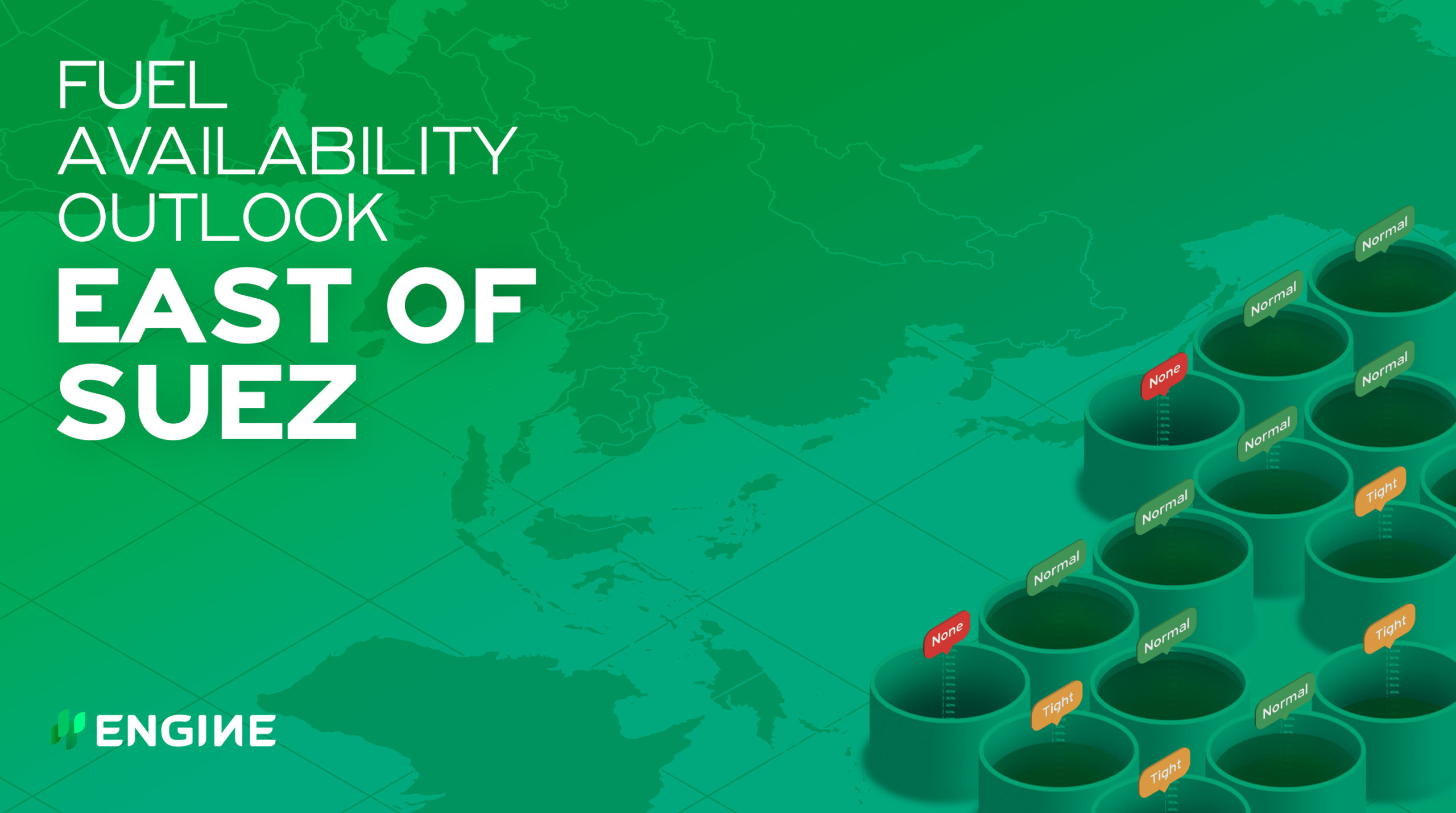Singapore
VLSFO availability has improved in Singapore, with lead times of 7-9 days recommended – down from 12-16 days two weeks ago. Average bunker demand and growing fuel inventories in the port have helped to improve the grade’s availability. However, prompt demand continues to remain under pressure as several suppliers are still struggling with tight delivery schedules, a source says.
The southeast Asian bunker hub’s fuel oil stocks have risen above 20 million bbls this month – up from under 19 million bbls in November. An influx of fuel oil imports from Brazil, the UAE and Russia have been behind most of the stock build.
Meanwhile, Singapore’s bio-bunker sales fell from 79,000 mt in October to 58,000 mt in November. These are primarily VLSFO blended with a bio component – typically 24% in Singapore. LNG sales slumped by a significant 55% in the same time frame.
Coming back to conventional bunker fuel, lead times of 6-10 days are recommended for HSFO – almost unchanged from last week. LSMGO remains readily available at the port.
China and East Asia
Availability of VLSFO is normal in Zhoushan amid low demand, with unchanged lead times of 5-7 days from last week. The other two grades – LSMGO and HSFO – remain in good supply in the Chinese bunker hub, with shorter lead times of 2-5 days advised.
VLSFO and LSMGO supply continues to be good in the northern Chinese port of Dalian. Availability of all three grades remains under pressure in the nearby part of Tianjin, with deliveries subject to enquiry there. Prompt availability of VLSFO and LSMGO is tight Qingdao, while HSFO supply is subject to firm enquiry.
Both grades are tight for prompt supply in the southern Chinese ports of Shanghai and Xiamen. Availability of HSFO continues to be under pressure in Shanghai.

Availability of VLSFO is normal in Guangzhou, but LSMGO supply remains tight. While both grades are subject to enquiry in the port of Fuzhou, they are in good supply in Yangpu.
Supply of all three grades remains good in Hong Kong, with several suppliers advising lead times of 5-7 days – similar to last week. Rough weather conditions are forecast in the port between Wednesday and Thursday, which might disrupt bunker operations.
Strong winds and high waves are predicted to hit the South Korean ports of Ulsan, Onsan, Busan, Daesan, Taean and Yeosu intermittently between 20-24 December, which may affect bunker deliveries in these ports.
A trader says that supply of VLSFO has tightened in South Korean ports. Most suppliers are unable to provide delivery dates in December and have pushed back delivery dates to January. Lead times of 3-9 days were advised for the grade last week. But one supplier can still offer the grade in December, a source claims.
Meanwhile, availability remains okay in South Korea, with lead times of around six days for LSMGO and nine days for HSFO.
Most suppliers in Japan are running low on stocks and have pushed back delivery times to the beginning of January. Reduced production in refineries, which have been focusing on domestic demand, are the primary reasons behind tighter bunker fuel supply, a trader explains.
Adverse weather conditions are forecast in the Philippine port of Subic Bay between 22-23 December, and in the Thai ports of Koh Sichang and Leam Chabang between 21-25 December, which may hamper bunkering operations.
South Asia
Supply of VLSFO and LSMGO remains good in Kandla on India’s northwest coast, with prompt dates available.
On the other hand, both the grades remain under pressure in several Indian ports including Mumbai, Visakhapatnam, Cochin, Haldia, Tuticorin and Paradip, with deliveries subject to availability.
Bad weather conditions are forecast in the Indian port of Sikka on Wednesday, which may impact bunkering deliveries.
Middle East
Persistent attacks on commercial ships in Red Sea by Yemen-based Houthi militant group have compelled several shipping companies to reroute their vessels and take the long route around Africa via the Cape of Good Hope. The attacks have also warranted a response from the US, which has announced a multination force to counter the threat.
The attacks have been carried out on merchant vessels in the Red Sea, especially in the Bab el-Mandeb Strait – a critical waterway for global maritime trade that runs between Djibouti and Yemen.
But Matthew Wright, lead freight analyst at Kpler has told ENGINE that most vessels are still using the Red Sea despite relentless Houthi attacks.
A trader says that the Red Sea attacks have yet to have had a substantial impact on bunker ports in the Middle East, including Jeddah, Port Suez and Fujairah, and that it is “business as usual.”
However, there has been increased traffic towards the Cape of Good Hope in the past few days, Wright adds. If the crisis continues to escalate, it might push traffic around Africa, which might also shift more bunker deliveries to African ports.
For the time being, the UAE port of Fujairah has been witnessing an unrelated uptick in demand due to upcoming holiday season. This has kept prompt availability of all grades under pressure in the port, with most suppliers advising lead times of around seven days.
Source: ENGINE, https://engine.online/news/availability/east-of-suez-fuel-availability-outlook-19-dec-2023-5580